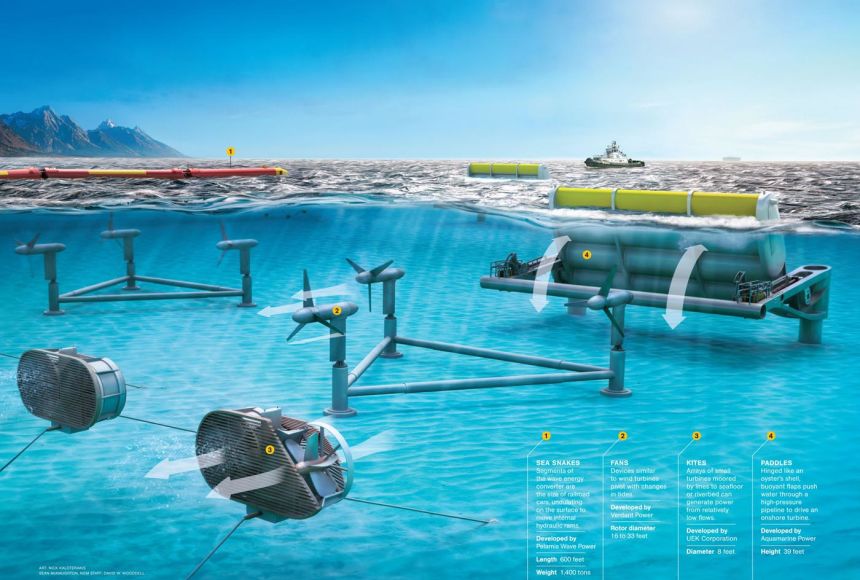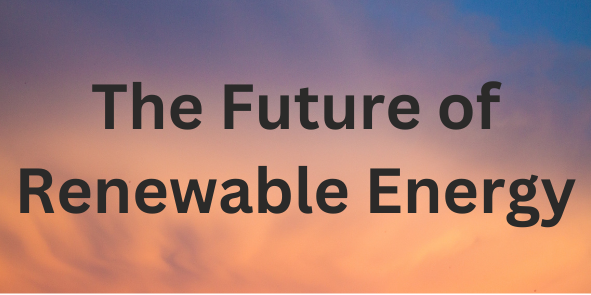The Future of Renewable Energy
The future of renewable energy is bright. The cost of renewable energy technologies has plummeted in recent years, making them more affordable than ever before. In addition, the growing demand for renewable energy is driving innovation in the field. As a result, renewable energy is poised to play a major role in the global energy mix in the years to come.
Key trends that are shaping the future of renewable energy:
- The cost of renewable energy is falling rapidly. The cost of solar and wind power has declined by more than 80% since 2009. This makes renewable energy more affordable than ever before, and it
makes it competitive with traditional fossil fuels.
- The demand for renewable energy is growing. The global demand for energy is expected to grow by 25% by 2040. This growth is being driven by the rise of the middle class in developing countries, and by the increasing demand for energy-intensive technologies like electric vehicles and air conditioning.
- Innovation is driving the future of renewable energy.
The latest technologies are being developed all the time that are making renewable energy more efficient and cost-effective. For example, new solar panels are being developed that can convert sunlight into electricity more efficiently than ever before.
- Renewable energy is becoming more mainstream. Renewable energy is becoming increasingly mainstream as more and more countries adopt policies to promote its use. For example, the United States has a goal of generating 20% of its electricity from renewable sources by 2025.
The future of renewable energy
Different Types of Renewable Energy
Renewable energy - Renewable energy is energy that comes from sources that are naturally replenished, such as sunlight, wind, and water.
Solar energy - Solar energy is the energy from the sun that can be used to generate electricity, heat, and light.Solar energy is renewable and sustainable, making it an attractive source of energy for many people. It is also abundant and available almost everywhere, making it a viable alternative to traditional energy sources.
Wind energy - Wind energy is the kinetic energy of moving air.This kinetic energy is converted into electricity by wind turbines. Our dependence on fossil fuels can be reduced by using wind energy.
Hydroelectric power - Hydroelectric power is the conversion of energy from falling or fast-flowing water into electricity. The kinetic energy of falling water is used to spin a turbine, which in turn drives a generator to produce electricity.
Geothermal energy - Geothermal energy is heat from the Earth's interior that can be harnessed for use as heat and electricity. Geothermal energy is a clean, renewable source of energy that can be used to heat buildings, generate electricity, and power vehicles.Eg. Hot springs and geysers: These are natural phenomena that occur when hot water from underground springs rises to the surface.
Biomass energy - Biomass energy is energy that comes from living or once-living organisms. It can be used to generate heat, electricity, or liquidfuel. Biomass is a renewable energy source, meaning that it can be replenished over time.
Some examples of biomass energy include:
Wood: Wood can be burned to generate heat or electricity. Crops: Crops can be grown specifically for their biomass content, such as corn or switchgrass. - Waste: Waste from agriculture, forestry, and industry can be used to generate biomass energy.
Tidal energy - Tidal energy is a form of renewable energy that uses the kinetic energy of tides to generate electricity. The tides are caused by the gravitational attraction of the moon and the sun on the Earth's oceans. As the Earth rotates, the tides rise and fall. This motion can be harnessed to generate electricity using a variety of methods.
 |
| Source & Credit: https://education.nationalgeographic.org/resource/tidal-energy/ |
Wave energy - Wave energy is a form of renewable energy that uses the power of waves to generate electricity. Waves are caused by the wind blowing over the surface of the ocean. As the wind blows, it creates waves that travel across the ocean. These waves can be harnessed to generate electricity using a variety of methods.
Nuclear fusion - Nuclear fusion is the process of combining two or more atomic nuclei into a single nucleus, releasing a large amount of energy in the process.
Hydrogen energy - Hydrogen energy is a form of clean energy that uses hydrogen to generate electricity, heat, and power vehicles.
Tags
Environment
